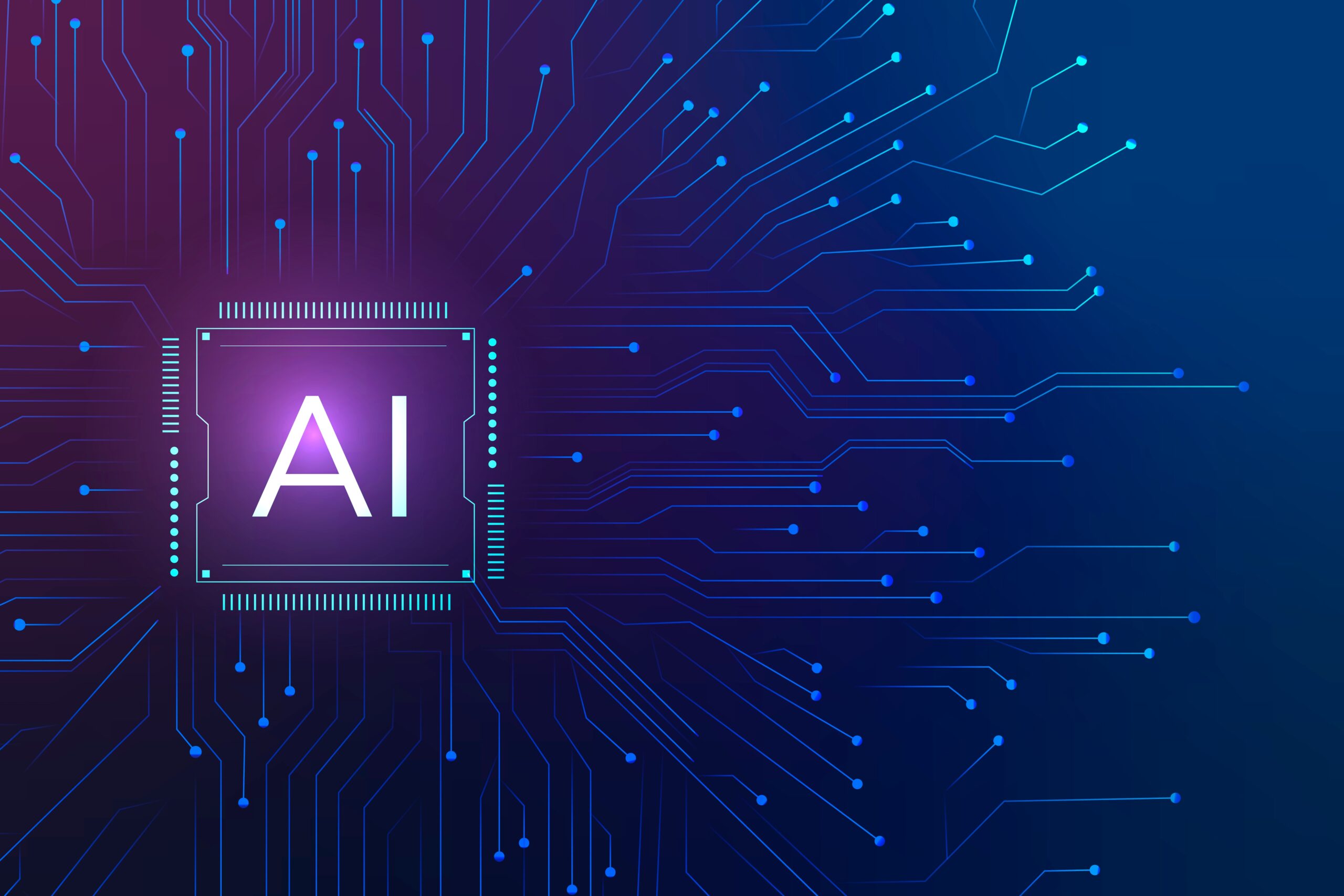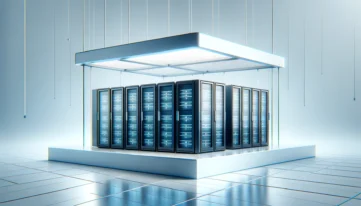As we continue to ride the wave of digital transformation, two technologies have emerged as pivotal drivers of innovation. These technologies are Artificial Intelligence (AI) and the Internet of Things (IoT). They are not only revolutionizing industries individually, but when combined, they create an even more powerful technological fusion known as the Artificial Intelligence of Things or AIoT.
What is AIoT, and why is it gaining significant attention across industries? AIoT refers to the integration of AI technology with IoT systems to create “intelligent” devices that collect, analyze, interpret, and act upon data in real time. This combination is set to revolutionize our world, from the way we live and work to the way industries function and evolve.
In this blog post, we will explore the world of AIoT, its fundamental principles, real-world applications, and its potential for the future. We will examine the components of AIoT systems and how they work together to drive efficiency and innovation. Additionally, we will consider the opportunities and challenges that AIoT presents, providing a comprehensive understanding of this emerging technology landscape.
Understanding AI and IoT
Before we delve into the synergistic relationship between AI and IoT, let’s take a moment to understand each of these transformative technologies individually.
Artificial Intelligence (AI) is a field of computer science that aims to develop machines capable of mimicking human intelligence. AI systems are designed to learn, reason, perceive, infer, communicate, and make decisions in ways similar to the human mind. They use algorithms and computational models to analyze data, identify patterns, and make predictions or decisions without explicit human intervention. AI can be broadly classified into two types: Narrow AI, which is designed to perform specific tasks such as voice recognition, and General AI, which can understand, learn, and apply knowledge across a wide range of tasks.
AI has many uses, from recognizing speech and processing images in smartphones to spotting fraud in banking, diagnosing diseases in healthcare, and driving cars without a human. The key to AI is its ability to learn from data and get better over time, making it a powerful tool for solving tough problems and creating new ideas.
The Internet of Things (IoT), on the other hand, is a network of interconnected physical devices that collect and share data. These devices, which can range from everyday household items like refrigerators and thermostats to industrial machinery, are embedded with sensors, software, and other technologies to connect and exchange data with other devices and systems over the internet.
IoT involves connecting devices and enabling communication, thereby creating a vast network of data-generating devices. This technology has caused a paradigm shift in how we live and work, paving the way for smart homes, smart cities, smart industries, and more. The real power of IoT lies in the valuable data collected by these devices, which can improve efficiencies, enable new services, and enhance decision-making.
Imagine the amazing things that can happen when AI and IoT work together. AIoT is created when devices are connected and can also think, analyze data, and make decisions. The next sections will explore more about this exciting combination of technologies.
The AIoT Revolution

As we have seen, AI and IoT individually offer numerous benefits. However, when integrated, they create an entirely new realm of possibilities. This is the genesis of the AIoT revolution, an evolution that is reshaping our world by leveraging the best of both technologies.
How AI Enhances IoT
AI augments IoT systems by providing the necessary intelligence to analyze and interpret the vast volumes of data generated by IoT devices. Here are some ways in which AI enhances IoT:
- Machine Learning: Machine learning, a subset of AI, is a game-changer for IoT systems. It provides the capability to learn from the data generated by IoT devices and improve performance over time. For example, a smart thermostat can learn a user’s preferences and schedule, adjusting the temperature automatically to provide optimal comfort and energy efficiency.
- Predictive Analytics: AI can be used to analyze data from IoT devices and make predictions about future events. This is especially useful in industries like manufacturing, where predictive maintenance can help prevent equipment failures and reduce downtime.
- Automation: By combining AI’s decision-making capabilities with IoT’s data collection and communication features, tasks can be automated to increase efficiency and reduce human intervention. This could range from automated lighting and temperature controls in a smart home to autonomous vehicles on the road.
Real-world Examples of AIoT
AIoT is not just a futuristic concept; it’s already being implemented across various sectors. Here are a few real-world examples:
- Smart Homes: AIoT is making homes smarter by enabling devices to learn from user behavior and make decisions accordingly. Think of a smart speaker that learns your music preferences or a smart fridge that can order groceries when you’re running low.
- Healthcare: In the healthcare sector, AIoT is used for remote patient monitoring, predictive analytics for disease management, and even robotic surgery.
- Manufacturing: AIoT is used to optimize production processes, predict equipment failures, and improve safety in manufacturing plants.
Benefits and Challenges of AIoT
The benefits of AIoT are immense, from improved efficiency and productivity to new business models and revenue streams. However, it also brings challenges, including data privacy and security concerns, the need for significant infrastructure and investment, and regulatory issues. Nevertheless, the potential of AIoT far outweighs these challenges, making it a driving force in the future of technology.
In the following sections, we will delve deeper into the components of AIoT systems, explore various use cases, and take a glimpse into the future of this revolutionary technology.
Key Components of AIoT Systems
AIoT is a dynamic and complex field that brings together diverse technologies under one umbrella. To truly understand how AIoT works, it’s crucial to examine its key components. Here, we’ll explore the fundamental elements that constitute an AIoT system:
- IoT Devices and Sensors: At the heart of any AIoT system are the IoT devices and sensors that collect data. These can range from wearable devices and home appliances to industrial machines and city infrastructure. Equipped with sensors, these devices monitor various parameters and gather data from their environment.
- Connectivity: Connectivity is a crucial component that enables the exchange of data between devices and systems. It can take various forms, from traditional Wi-Fi and Ethernet to cellular, Bluetooth, Zigbee, and low-power wide-area networks (LPWANs) like LoRaWAN.
- Data Processing and Storage: Once data is collected, it needs to be processed and stored. This can be done either on the device itself (edge computing) or in the cloud. Edge computing is becoming increasingly popular in AIoT systems due to its ability to reduce latency and save bandwidth.
- Artificial Intelligence: AI is the brain of an AIoT system. It analyzes the data collected by IoT devices and extracts valuable insights. This involves various AI techniques like machine learning, deep learning, natural language processing, and computer vision.
- Action: The final component of an AIoT system is the action that’s taken based on the insights derived from AI. This could be an automated action, like adjusting the temperature of a smart thermostat, or an alert sent to a user or system administrator.
It’s important to note that an AIoT system is not just about the individual components but the interaction between them. The devices and sensors collect data, the connectivity ensures this data reaches where it needs to go, the AI processes and analyzes the data, and finally, an action is taken based on the insights gained.
In the next section, we’ll look at some of the ways AIoT is being applied in various industries, and how it’s transforming the way we live and work.
AIoT Use Cases
From healthcare and retail to agriculture and transportation, AIoT is finding applications in nearly every industry. Here are some notable use cases:
- Smart Homes: AIoT has taken the concept of smart homes to new heights. For instance, AI-powered home security systems can recognize faces and alert homeowners about unfamiliar visitors. Smart appliances can learn user habits and adapt accordingly to provide a more personalized and convenient experience.
- Healthcare: In healthcare, AIoT is being used for remote patient monitoring, where sensors collect patient data and AI algorithms analyze this data to provide real-time feedback. This can help in early detection of health problems and timely intervention.
- Manufacturing: In the manufacturing sector, AIoT is used to optimize production processes, predict equipment failures, and improve safety. Sensors on machinery monitor operational parameters, and AI algorithms can predict failures before they happen, reducing downtime and maintenance costs.
- Agriculture: In agriculture, AIoT is being used for precision farming. Sensors collect data on soil moisture, temperature, and nutrient levels, and AI algorithms analyze this data to provide recommendations for irrigation and fertilization.
- Transportation: In the transportation industry, AIoT is being used in everything from traffic management systems that analyze traffic flow and adjust signals to reduce congestion, to autonomous vehicles that use sensors and AI algorithms to navigate roads safely.
The Future of AIoT
As we’ve seen, AIoT is already transforming various sectors, but we’re just scratching the surface of what’s possible. So, what does the future hold for AIoT?
- Ubiquitous Computing: As AIoT continues to evolve, we can expect to see more ubiquitous computing, where technology is seamlessly integrated into our everyday lives. This will result in smarter homes, cities, workplaces, and more.
- Advanced Automation: AIoT will also lead to more advanced automation. With AI algorithms getting better at making decisions, we can expect to see more tasks being automated, from mundane chores to complex business processes.
- Data Privacy and Security: As AIoT becomes more prevalent, issues around data privacy and security will become increasingly important. We can expect to see advancements in encryption and other security technologies to protect sensitive data.
- Ethical Considerations: As AI takes on more decision-making roles, ethical considerations will come to the forefront. This will lead to discussions and regulations around transparency, accountability, and fairness in AI systems.
In conclusion, AIoT represents a powerful convergence of two transformative technologies. By bringing together the data collection capabilities of IoT with the analytical prowess of AI, AIoT is set to revolutionize how we live and work. As we move into the future, the possibilities of AIoT seem boundless, promising a world where technology is more integrated, intelligent, and responsive than ever before.










